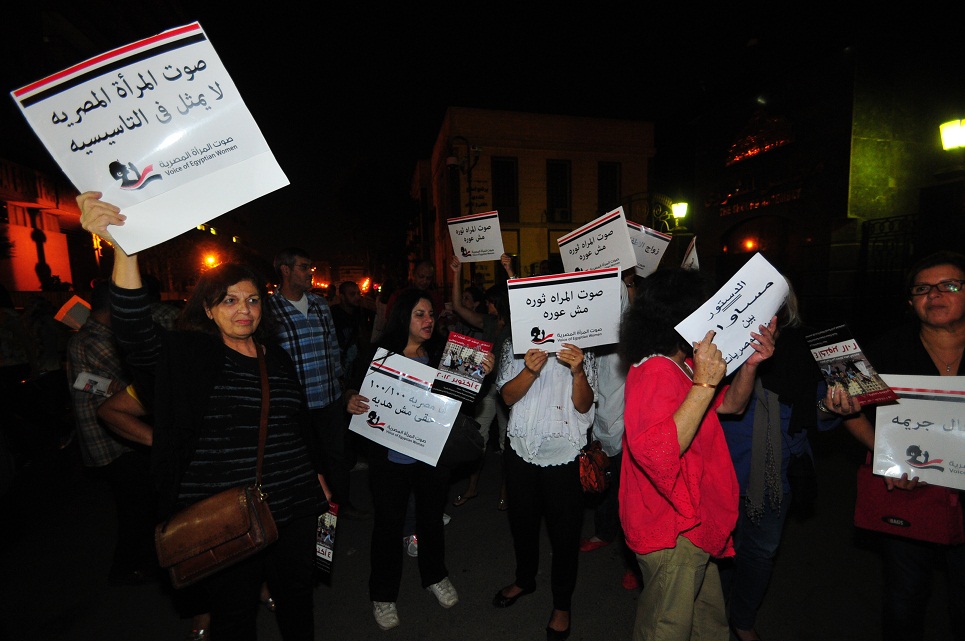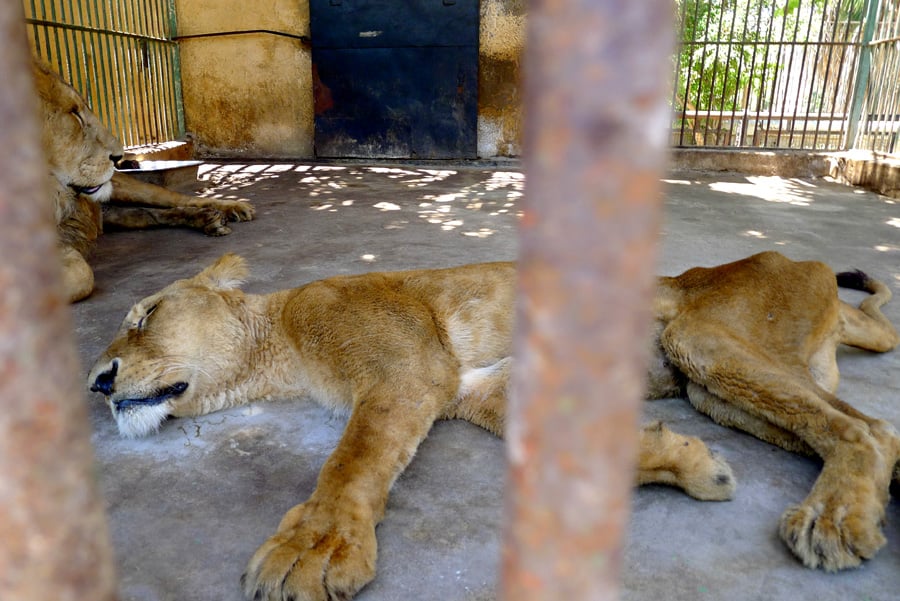
Khaled Elbarky
Two months ago a lioness at Alexandria zoo made international headlines because of the way she died; after four days struggling with pain, she stopped eating and died. Local and international animal activists were livid.
Several complaints started online, from “help rescue animals in Egyptian zoos” and “save Giza zoo animals” to calls for animals in public zoos to be transferred abroad to more humane places.
Photos of the sick lioness circulated almost a week before her death and calls to “save the Alex zoo lioness” spread online, forcing a response from Zoo Manger Iman Mokamer assuring activists that, “the case is under control they are doing the best they can,” adding they were sending the lioness for a check-up. A day later, the lioness died.
Her death raised questions about the conditions of public zoos in Egypt.
Few know that there are six public zoos beside the historical Giza zoo: in Alexandria; Beni Sweif; Fayoum; Kafr El-Sheik; Mansoura; and Tanta. These are much smaller in size, so that few people living outside the aforementioned cities and governorates, besides veterinarians and animal lovers, have even heard of them.
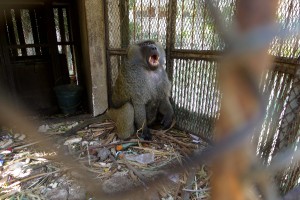
Khaled Elbarky
All zoos come under the jurisdiction of the central head of public zoos, Fatma Tamam, who also happens to be the director of Giza zoo and the conservation manager and head of managerial authority of the Convention on International Trade in Endangered Species of Wild Flora and Fauna (CITES).
To make it simpler; in Egypt the jurisdiction of any animal-related organisation comes under the General Organization of Veterinary Services (GOVS), headed by Osama Selim.
GOVS supervises four sectors: public zoos; veterinarian quarantine; veterinarian preventive medicine; and abattoirs.
The irony is that Selim, head of the veterinary services, is also head of the Scientific Research Committee for CITES agreements. “This causes us to run around in circles when complaining about an issue,” explains Hatem Mushir, an animal rights activist.
For example, if an animal dies at Giza zoo, an activist files a complaint to the zoo director, who is Tamam. Then if he wants to file a complaint against the zoo as a whole, it is handed to the head of the Public Zoos, who is Tamam as well. If he files a complaint at the Environment Police, that too is handed to Tamam for investigation.
This empty cycle is driving activists mad. “It’s typical Egyptian mismanagement,” says Dina Zulfikar, renowned Egyptian animal rights activist. Animal rights activists took to the street in April 2011, demonstrating in front of Giza zoo demanding the separation of the zoo from wildlife management as well as the improvement of conditions for zoo animals. To no avail.
The condition of Giza zoo is criticised by many, but outside Cairo the other public zoos are in even worse condition. “They do not get the same resources nor are they given enough attention,” says Alaa Khater, head of the supervision committee in Daqhlia governorate. Khater stresses mismanagement as the source of all problems in public zoos.
“We found out that animals lack proper nutrition,” he says. They conducted several experiments to prove that the lack of adequate food was the reason for the animals’ lack of propagation and low immunity. For example, the mountain goats at Tanat Zoo did not produce any new offspring for seven years. “Now we have eight newborns after the parents were well fed,” Khater says.
He stresses that nothing was done except proper and frequent feedings. The same system was put in place for peacocks and wild chickens with similar successful results.
At Kafr El-Shaikh zoo, two lions drew the attention of Khaled Elbarky, freelance photographer turned animal rights activist, after he witnessed the conditions of the animals. Elbarky was on assignment to take photos of Egyptian public zoos as part of an international workshop. “I was not an animal activist but turned into one,” he says.
“This male lion was always poked by his keeper so he would roar to entertain visitors.” The activists talked to the zoo manager who promised to put a stop to this. He started a group on Facebook “Help rescue Animals in Egypt Zoos” two months ago, which drew over 2000 members of different nationalities.
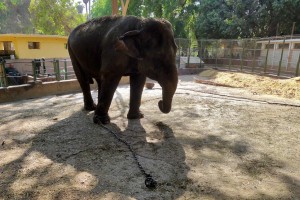
Khaled Elbarky
The animals at Kafr El-Shaikh zoo are puny, injured and live under horrendous conditions, according to Elbarky. Khater agrees, saying “you only have to look at the animals to see they lack nutrition.” The size of the lions in Egyptian zoos, which are quite small compared to lions in other international zoos, has been the source of local jokes for years. Few people know that their size is mainly due to lack of proper feedings.
The importance of these public zoos is not just as places to display wild animals, “they also work as rescue centres for wildlife,” says Zulfikar. “For example, the lions confiscated from the lately arrested thug Naknoukh were sent to Alexandria zoo.” Their role as rescue centres leaves a lot to be desired.
In November 2011 a lioness cub was confiscated in Sharm El-Sheikh and given to Giza zoo. Activists donated blankets, toys and time to the cub. A month later, she died. Reports were filed and her death attributed to low immunity and her missing her mother.
This raises a question; are Egyptian public zoos equipped to handle such a task?
“The public zoos in Egypt do not even have an x-ray machine,” says Zulfikar. “Animals should be checked for tuberculosis [TB] periodically, but this is not done. The zoo also should offer [blood] tests for zookeepers as they may contract or transmit diseases.”
The transmission of disease at zoos has been always a point of contention between activists and administration. “They allow photo shoots with cubs, peacocks and others,” explains Zulfikar.
Photographers every year outbid each other to take on zoo photography as it is a very lucrative business; for a parent, it’s easily worth EGP 20 to have a photo taken of their child holding a lion cub. The fear is mainly from transmission of TB, among other diseases, from people to animals.
TB accusations are usually scoffed by zoo officials but it is a serious problem that has been going on for years. Omar Tamam, a veterinarian who used to work at Giza zoo, got his masters degree researching TB in Giza zoo animals in 1994. His research resulted in an astonishing conclusion; around 20 percent of zoo animals had at least one form of TB. No action was taken at that time by then minister of agriculture Youssef Wali.
Tamam was then asked to testify in that matter as part of a lawsuit against Wali. He complied only to be subsequently fired from his job at the zoo. He filed a lawsuit against zoo management for unlawful termination and last month, 14 years later, the court ruled in his favour.
He was awarded compensation, but so far “the ministry of agriculture is refusing to give it to me,” he says. Tamam published a book, Our Children in Danger, warning of the risk of spreading TB from zoo animals to children in particular. “The WHO [World Health Organization] has warned that children in Egypt are most susceptible to TB,” Tamam says, adding that “infected animals should be euthanised.”
This raises another problem: euthanasia is not allowed in Egypt. Animals suffering from terminal diseases, old age or other severe conditions are kept alive, which goes against every humane mandate. One such case is Sammar the tigress. “Sammar is a female tiger in Kafr El-Shaikh zoo,” says ElBakry. “She is one of the rarest and beautiful animals in Egypt zoos, she is a very old tiger over 25 years old [which] is a record for tigers.”
She is suffering from various ailments and is in a lot of pain. “In such cases animals should put to sleep to end their suffering but this not allowed in Egyptian zoos,” ElBakry says. “Besides that, she kept in very poor conditions, in a cage with a concrete floor, without companion, no medical care and daily abuse.”
Concrete floors are a major issue in public zoos; animals in their natural habitats are used to dirt, sand and soft ground in general. “Concrete causes problems, particularly in heavy animals such as big cats and elephants, as it is hard and causes arthritis and tendon inflammation to the point that they can no longer walk,” explains Yasser Hanfi, wildlife activist.
“An example is the Asian elephant at Giza zoo that can barely walk because of severe pain. They force her to walk by prodding her with a fork and people living near Giza zoo can hear her screams.”
The problem according renowned architect and animal lover Salah Zaky is lack of information and bad administration. “They have enough money and have increased the ticket price so it is not a lack of funds, but the problem is that they refuse to deal with specialists.”
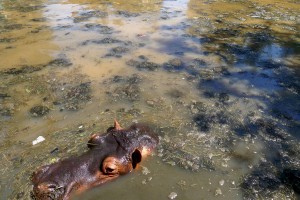
Khaled Elbarky
An example of mismanagement is the orangutan enclosure. Three orangutans were given as a gift to Egypt in May 2010 from Al-Ain Zoo in the United Arab Emirates. One of them died out of hepatitis in March 2011, angering activists who pushed for a new enclosure more similar to their natural environment.
The zoo has since been working on this. “Al-Ain Zoo was angry and wanted to take the remaining two back,” says Zulfikar. The two orangutans until now have not been tested for hepatitis, “for fear they have been infected,” she claims.
Nor have they been moved to a new enclosure. Zaky supplied the zoo with drawings for a new enclosure, but the zoo’s management chose to ignore the advice. “It’s just a big cage with no resemblance to the orangutan’s habitat,” Zaky says.
“There is neither art nor care for what they are building resulting in an obnoxious [architectural] result for what is a historical zoo as well as [an inadequate habitat for] the animal.”
Giza Zoo is built over 80 acres and was first established in 1891. The buildings are registered as historical, including some of the cages. The additions in recent years have had less to do with aesthetics though. As Salah puts it, “they are always in a rush. In the case of the cages, they contract a blacksmith. Not even an engineer or an animal specialist; the fastest and cheapest way.”
As a result the architectural appeal the zoo has been gradually fading in recent years.
Activists trying to be helpful asked to see the public zoo’s budget to review it and possibly offer advice. After all, it is a public space owned by the people. “They refused, saying as the army does not share its budget neither will they,” Mushir says.
Zaky wonders at this attitude; “all around the world there are NGOs and specialists from civil societies who help with zoos and volunteer to make it a better place.” But how can they help when they do not even know how the available resources are spent?
Khater adds that they have filed several reports to the Administrative Oversight Authority to look into the budgets of the public zoos, “with no success”. He adds that in the last fiscal year an excess of EGP 23 million was not used by the Veterinarian Services Authority and given to the Giza zoo. They used the money to renovate buildings, contracting the army to do the work.
“Why wasn’t this money spent on animals instead?” Mushir asks. Incidents of such spending are common. Giza zoo in the past stated in newspapers that it had spent EGP three million on the elephant enclosure. “You only have to look at that enclosure to judge,” Mushir states.
Another problem is filing of animals cases. “Giza Zoo, as a central managerial authority has to record all animals according to agreements with the African Zoos Authority, including all information about the animals,” says Zulfikar. “But for example, there was a chimp that died in January at Alexandria zoo. The zoo did not have his file.”
The chimpanzee was transferred from Giza to Alexandria zoo. “I asked the zoo manger how he died and she told me it was of old age. He was only 17!” Zulfikar then asked about his file and was told by the manger he had no file when transferred. “Why not send the animal’s file with him when transferred?” Another issue is the newborns. “Do we have records for the new-borns? If so where are they? Are they sold?” The questions raised have no clear answer.
All animal rights activists agree on one thing; the importance of spreading awareness. Many would like to volunteer to help with awareness sessions at the zoos with the cooperation of the current management. One recent would be volunteer is 16 year old Hana El-Safoury, who after a visit with her school to Giza zoo wanted to help.
“We were told we do not need help and to go help in Tanta Zoo instead.” The young people wanted to help clean the zoo, spread awareness among the keepers and in general be around animals. El-Safoury, who aspires to be a veterinarian after she finishes high school, says that she feels “sick” when she goes to the zoo. “I feel severe anguish from the state of utter neglect of the animals’ needs and comfort.”

Khaled Elbarky
Hanfi says that to solve the problem, one has to admit that they are suffering. “They refuse to admit the zoos are having problems. You only have to read their newspaper articles and statements.”
After this admission comes the articulation of each problem and how it can be solved according to available resources. Activists say that they understand budget limitations, but argue what is happening is “resource mismanagement”.
When asked why they care so much about the zoo animals, Zulfikar says “they have given years of their lives to entertain us, how about a little gratitude and make their lives easier?”
** “A fax was sent to the Veterinarian Services Authority to set a meeting with Giza Zoo director, Fatma Tamam, as requested. Until time of print there was no response.”

